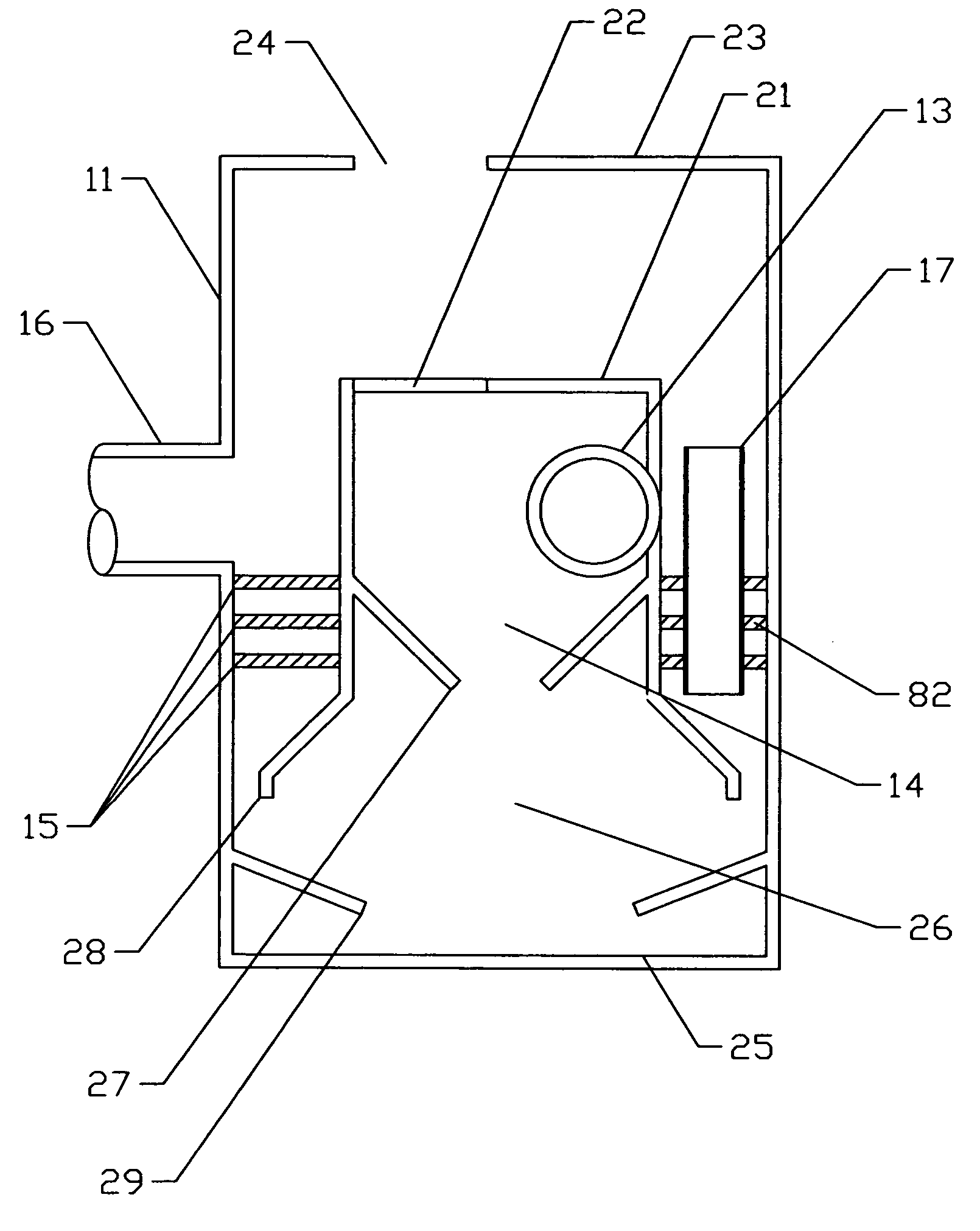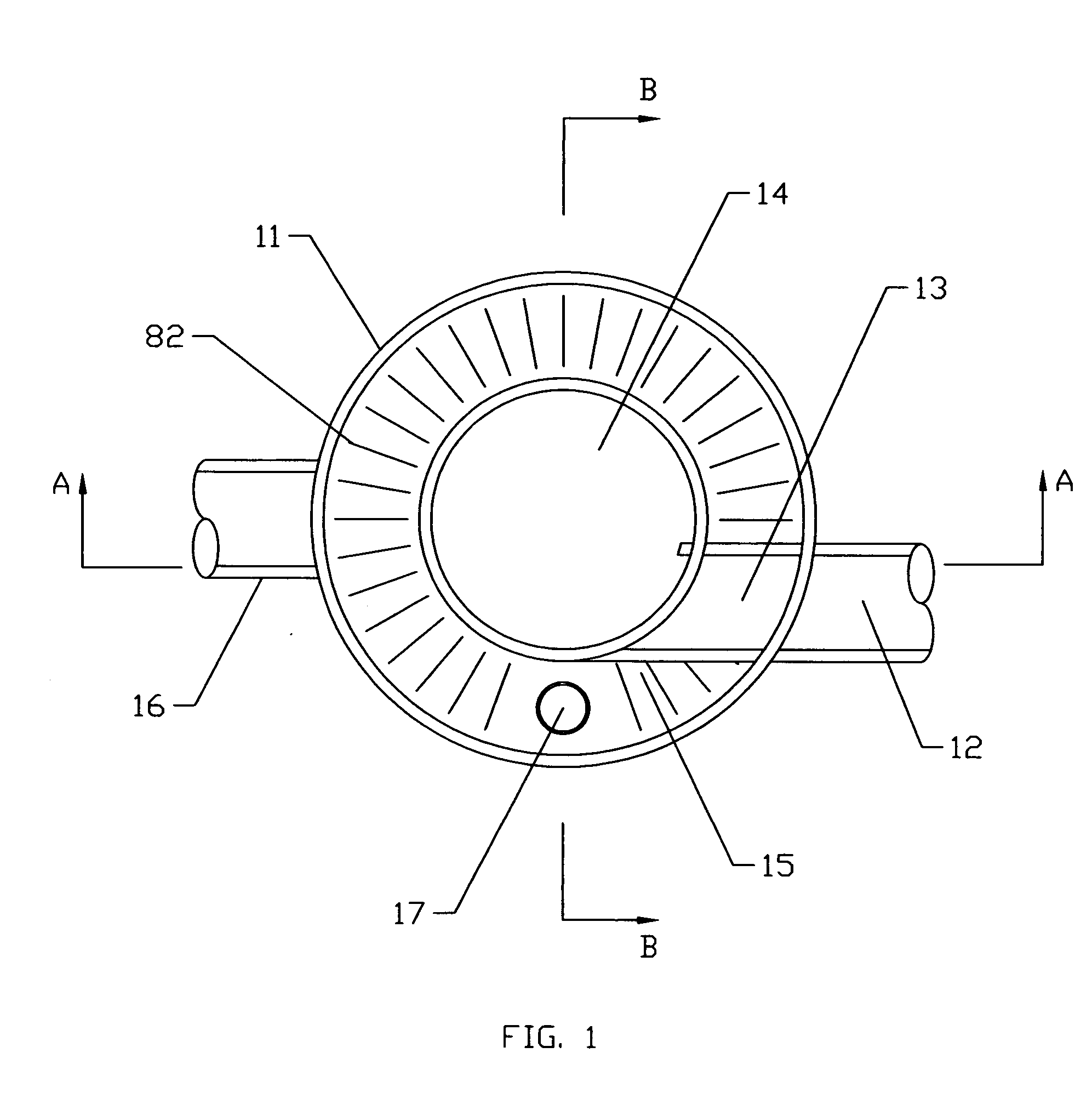Method of and apparatus for cleaning runoff water
a runoff water and runoff technology, applied in the direction of liquid displacement, multi-stage water/sewage treatment, separation process, etc., can solve the problems of significant amount of trash, debris, other floatable materials entrained in the water, and the treatment capacity of the plant can exceed the capacity, so as to prevent contamination
- Summary
- Abstract
- Description
- Claims
- Application Information
AI Technical Summary
Benefits of technology
Problems solved by technology
Method used
Image
Examples
Embodiment Construction
[0026]FIGS. 1, 2, and 3 show the preferred form the invention. FIG. 1 is a plan view of the invention. FIG. 2 is a cross sectional view taken along line A-A as indicated in FIG. 1 and FIG. 3 is a cross sectional view taken along line B-B as indicated in FIG. 1.
[0027] The invention is housed in a container, comprising a floor 25, a top 21 with an opening 22 for access, and side walls 11. A fluid carrying contaminants to be separated is introduced to the system through inlet 12, which penetrates side wall 11 and conveys the fluid to pipe 13. Inlet means 12 conveys a fluid that has sufficient upstream head to force the fluid through the system, as indicated by the vertical section of inlet means 12 in FIG. 2. From pipe 13, the fluid enters vortex chamber 14, tangentially, as commonly done, where the swirling action helps to separate the contaminants from the fluid. Floating contaminants are stored in the vortex chamber 14, trapped by the roof 21 of the vortex chamber. In the roof 21 o...
PUM
| Property | Measurement | Unit |
|---|---|---|
| permeable | aaaaa | aaaaa |
| permeable barrier | aaaaa | aaaaa |
| flow rate | aaaaa | aaaaa |
Abstract
Description
Claims
Application Information
 Login to View More
Login to View More - R&D
- Intellectual Property
- Life Sciences
- Materials
- Tech Scout
- Unparalleled Data Quality
- Higher Quality Content
- 60% Fewer Hallucinations
Browse by: Latest US Patents, China's latest patents, Technical Efficacy Thesaurus, Application Domain, Technology Topic, Popular Technical Reports.
© 2025 PatSnap. All rights reserved.Legal|Privacy policy|Modern Slavery Act Transparency Statement|Sitemap|About US| Contact US: help@patsnap.com



